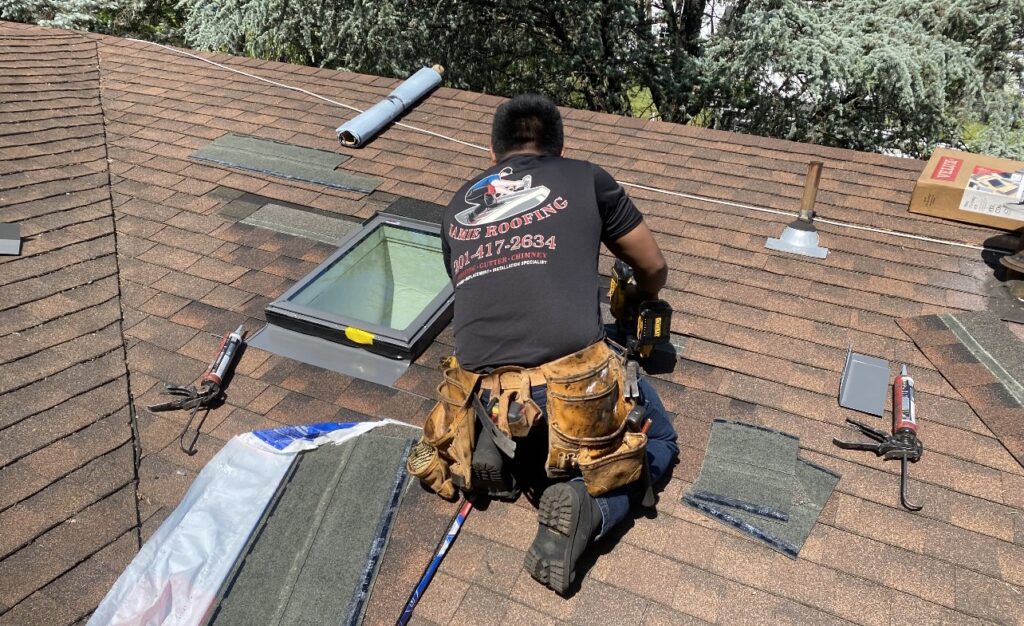Introduction: Understanding the 6.7L Powerstroke Engine
The 6.7L Powerstroke diesel engine, introduced by Ford in 2011, represents a significant advancement in heavy-duty diesel technology. Designed for the Ford Super Duty series (F-250, F-350, and F-450), this engine is known for its robust performance, high towing capacity, and advanced emissions systems. Built in-house by Ford to replace the 6.4L Powerstroke, the 6.7L engine features a compacted graphite iron block, reverse-flow heads, and a unique variable geometry turbocharger. Despite its strengths, long-term use can lead to performance challenges due to emissions components like the EGR (Exhaust Gas Recirculation) system, DPF (Diesel Particulate Filter), CCV (Crankcase Ventilation), and DEF (Diesel Exhaust Fluid).
Common Problems in Aging 6.7L Powerstroke Engines
Over time, 6.7L Powerstroke engines can suffer from performance degradation due to clogged or malfunctioning emissions systems. Drivers frequently report increased fuel consumption, sluggish throttle response, reduced horsepower, and frequent regeneration cycles that disrupt driving. Additionally, carbon buildup in the EGR system, soot-clogged DPF filters, and excessive crankcase pressure due to the CCV system can cause reduced engine longevity and elevated maintenance costs.
These issues are not unique to the 6.7L Powerstroke, but the complexity and sensitivity of the emissions equipment on this engine make them particularly noticeable during extended ownership or heavy-duty operation. For many diesel truck owners, deleting these systems provides a pathway to restore lost power, improve reliability, and extend the lifespan of the engine.
EGR, DPF, and CCV Systems: Functions and Long-Term Issues
EGR (Exhaust Gas Recirculation)
The Exhaust Gas Recirculation (EGR) system reduces nitrogen oxide (NOx) emissions by routing a portion of exhaust gases back into the intake manifold, which lowers combustion temperatures. However, over time, this process introduces carbon-laden soot into the intake stream, causing buildup in the intake manifold and around the valves. This buildup restricts airflow, reduces engine efficiency, lowers fuel economy, and leads to rougher engine performance.
DPF (Diesel Particulate Filter)
The Diesel Particulate Filter (DPF) traps soot from diesel combustion and periodically burns it off through regeneration cycles. If these cycles are interrupted or the vehicle is used for short trips, the DPF can clog, increasing backpressure and reducing turbo efficiency. Severe clogging may trigger limp mode, limiting power and drivability. Replacing or cleaning the DPF is expensive, often costing thousands in parts and labor.
CCV (Crankcase Ventilation)
The Crankcase Ventilation (CCV) system recirculates blow-by gases—unburned fuel and oil vapors—from the crankcase into the intake for reburning. While this helps reduce emissions, it introduces oil mist into the intake system, which mixes with EGR soot to form sludge. This buildup coats the intake and intercooler, reduces airflow and cooling efficiency, and contributes to power loss and increased engine wear over time.
What Does the 6.7 Powerstroke Delete Kit Do?
A 6.7 Powerstroke delete kit is a performance-enhancing solution specifically designed to eliminate or disable certain emissions control systems in Ford’s 6.7L Powerstroke diesel engine. These systems—including the EGR (Exhaust Gas Recirculation), DPF (Diesel Particulate Filter), and CCV (Crankcase Ventilation)—are installed to meet emissions regulations. However, they often come at the expense of engine efficiency, performance, and long-term durability. While necessary for environmental compliance on public roads, these components can cause a range of performance issues, especially when the truck is used in off-road, competition, or heavy-duty towing scenarios.
By removing the EGR system, owners can prevent further carbon buildup in the intake and maintain clean, unrestricted airflow into the combustion chambers. Eliminating the DPF allows the exhaust system to operate without backpressure, thereby enhancing turbocharger efficiency and reducing stress on engine components. Replacing the CCV system with a reroute kit keeps oil vapors out of the intake, preserving intercooler performance and reducing sludge formation.
The combined result of deleting these emissions control systems includes:
- Cleaner engine internals, which reduce the need for frequent maintenance related to soot and oil contamination.
- Improved fuel economy, as the engine no longer struggles with excessive exhaust backpressure and inefficient combustion cycles.
- Enhanced throttle response and power delivery, particularly during towing or under heavy loads, as the engine operates with less restriction.
- Reduced risk of emissions-related failures, such as limp mode activation, sensor malfunctions, or costly component replacements.
Ultimately, these modifications restore the engine’s original airflow dynamics, improve combustion efficiency, and extend the service life of critical components. For off-road, competition, or heavy-duty use where emissions compliance is not required, a properly installed delete kit provides a practical and performance-oriented solution.
How Much Horsepower Can You Gain from Each Delete?
Here’s a breakdown of estimated horsepower gains and benefits based on the component removed:
| Component Deleted | Estimated HP Gain | Key Benefits |
|---|---|---|
| CCV Delete | +5 to +10 HP | Cleaner intake, less oil vapor contamination |
| EGR Delete | +10 to +25 HP | Reduced carbon buildup, cooler intake temps |
| DPF Delete | +25 to +40 HP | Improved exhaust flow, less turbo restriction |
| EGR + DPF Delete | +40 to +70 HP | Max airflow restoration and power gain |
| Full Delete with Tuner | +80 to +100+ HP | Optimized fuel mapping, turbo boost, full system unlock |
When combined with a high-quality tuner, the full delete can unlock well over 100 horsepower, depending on other upgrades such as cold air intakes, intercoolers, and turbo enhancements.
Best Ford 6.7 Powerstroke Delete Kit Recommendations
When upgrading your 6.7L Powerstroke diesel for improved horsepower, throttle response, and long-term reliability, selecting the right delete kit is a critical decision. Among the options available, DynoVox stands out for its precision engineering, long-term durability, and vehicle-specific fitment. For owners of 2011–2023 Ford Super Duty trucks equipped with the 6.7L Powerstroke engine, DynoVox offers a complete, high-performance solution.
DynoVox DPF/EGR/CCV Delete Kit with Tuner for 2011–2023 6.7L Powerstroke
This all-in-one solution is specially engineered to remove emissions-related restrictions while safely recalibrating the ECU for optimized performance. Here’s why it’s the preferred choice for performance-focused diesel owners:
Vehicle Compatibility: Fits 2011–2023 Ford F-250, F-350, F-450, and F-550 Super Duty models with the 6.7L Powerstroke diesel engine.
Complete Kit Contents: The DynoVox delete kit features a DPF Delete pipe to improve exhaust flow, an EGR kit to reduce carbon buildup and intake temps, and a CCV reroute to keep the intake clean from oil vapors.
Material Quality: Constructed using T-409 stainless steel and aluminized heavy-gauge tubing, ensuring long-term corrosion resistance and rugged durability even in extreme conditions.
Bolt-On Installation: Designed as a direct-fit solution with all necessary hardware included—no welding or fabricating required.
Get your 6.7L Powerstroke running stronger—click here to claim 10% off DynoVox’s complete delete kit with code DYBL10.
This premium delete bundle has been rigorously tested under demanding conditions and is trusted by performance diesel owners across North America. Whether you’re towing heavy loads, racing on the track, or simply want to protect your engine from long-term emissions-related wear, DynoVox delivers the reliability, performance, and peace of mind you need.
Considerations and Risks
While delete kits offer compelling performance and reliability benefits, there are some important considerations:
Emissions regulations: Deleting emissions equipment is illegal for on-road vehicles in most jurisdictions. These kits are designed for off-road, racing, or competition use only.
Warranty voiding: Modifying or deleting emissions systems may void your factory powertrain warranty.
Truck owners must weigh the performance benefits against these potential trade-offs. For those operating in off-road or racing environments, a delete kit offers one of the most powerful upgrades available for the 6.7L Powerstroke.
Conclusion
The 6.7 Powerstroke is a powerhouse diesel engine, but like many modern diesel platforms, it suffers from emissions-related performance bottlenecks over time. By removing the EGR, DPF, and CCV systems with a high-quality delete kit from DynoVox, drivers can restore lost horsepower, improve fuel economy, and extend the life of their trucks.
Whether you’re towing heavy loads, racing, or just looking to reduce maintenance headaches, a full delete setup with tuning can unlock up to 100 horsepower or more. Just be sure to consider your local regulations and choose a trusted brand like DynoVox for maximum reliability and performance.






